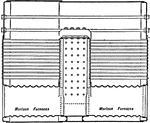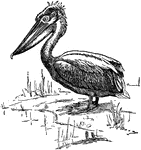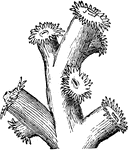
Thomas H. Huxley
(1825-1895) British biologist that had many studies in medicine and marine life. He was a supporter…

Loggerhead turtle
Loggerhead turtles can grow from six to nine hundred pounds. Listed as threatened under the U.S. Federal…

Leatherback turtle
Leatherback turtles are listed as threatened under the U.S. Federal Endangered Species Act.
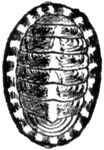
Chiton
Chiton is a peculiar marine mollusk. It is low and flat, creeping like the limpets. But the shell consists…

Sponge
In this simple sponge, water enters minute holes in the sides and passes out of the opening at the top…
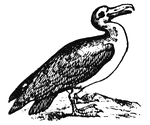
Albatross
A large marine swimming bird. The bill is straight and strong, the upper mandible hooked at the point…

Tubularia
Tubularia are members of the Protista kingdom. The pipe-coralline (Tubularia) is an example of another…

Sertularia
Sertularia are members of the Protista kingdom. It is an example of another group of the hyroid zoophytes,…

Sertularia
Sertularia are members of the Protista kingdom. It is an example of another group of the hyroid zoophytes,…
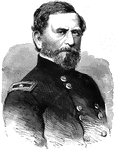
J. T. Sprague
"General J. T. Sprague, born in Newburyport, Mass., July 3rd, 1810, died in New York city, September…

Second Naval Battle
"Second naval battle in Hampton Roads- fight between the Federal ironclad Monitor, of two guns,…

Paducah, Kentucky
"View of the town of Paducah, Ky., at the confluence of the rivers Ohio and Tennessee, the Northern…

Rhode Island Regiments
"Rhode Island Regiments embarking at Providence for New York and Washington. Within five days after…
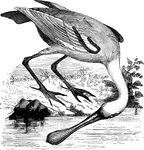
Roseate Spoonbill
Drawing its name from the widing of its bill towards the tip, the spoonbill frequents coastal and marshy…

Common Dab
"Is eight to ten inches long, feeds on crustacea, small fish, and marine insects, is often caught with…
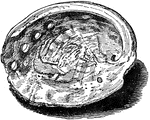
Abalone
"A general name on the Pacific coast of the United States for marine shells of the family Haliotidæ…

Marine trumpet-shell
"The marine trumpet or Triton's shell, Triton variegatus, is elegantly variegated with red…
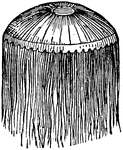
Acaleph
"One of the Acalephae; a name given to a large number of marine animals; and redpresenyted chiefly by…

Medusa's head pentacrinus
"This may be considered as one of the greatest wonders of nature, it being a real animal, having blood,…
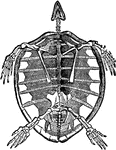
Skeleton of Turtle
"Turtle is, in zoology, the popular name for any species of the Cheloniidæ. They may be distinguished…

Walrus
"The walrus, also called the morse, seahorse, and sea cow, is now confined to the regions within the…

Egg of Common Whelk
"Whelk is a popular name for a number of marine gasteropods, and especially applied to species of Buccinum…
!["Hydrozoon is a name given to the great class of the sub-kingdom Cœlenterata, of which hydra is the type. They exhibit a definite histological structure, their tissues having a cellular organization. These tissues are two, an outer or ectoderm, and an inner or endoderm. In most the prey is seized by tentacles surrounding the mouth and furnished with offensive weapons called thread cells, The hydrozoa are all aquatic, and nearly all marine. Their distribution is world-wide. [Pictured] Hydra fusca, with a young bud at b, and a more advanced bud at c."—(Charles Leonard-Stuart, 1911)](https://etc.usf.edu/clipart/15400/15469/hydrozoon_15469_mth.gif)
Hydrozoon
"Hydrozoon is a name given to the great class of the sub-kingdom Cœlenterata, of which hydra is…

Sole
"Sole (Solea vulgaris) is a marine fish belonging to the flat fishes, of an oblong or oval form. These…
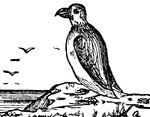
Puffin
A marine diving bird, allied to the auk, and having a short, thick beak like that of the parrot.

Leech
A class of suctorial worms found in bodies of water, marshes, and other moist places. There are many…

Lobster
A large marine crustacean somewhat resembling a crawfish, but larger in form. The common lobster of…

Starfish
A class of marine animals, which have a star-like body composed of a central disc extended into five…
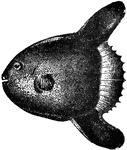
Sunfish
A genus of marine fishes of the diodon family. They are so called from the compressed form of the body,…
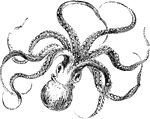
Cuttle-fish
Cuttlefish are animals of the order Sepiida, and are marine cephalopods, small relatives of squid and…
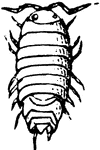
Isopods
This illustration shows an isopoda. These are one of the most diverse orders of Crustaceans, with many…
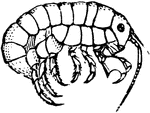
Amphipod
Amphipoda include over 7000 described species of small, shrimp-like crustaceans. Most amphipods are…
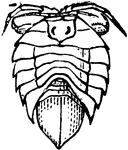
Isopod
Isopods are one of the most diverse orders of Crustaceans, with many species living in all environments,…
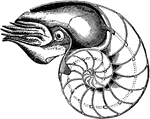
Nautilus
A marine creature of the class Cephalopoda. They are found only in the western Pacific, inhabiting waters…
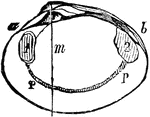
Oyster
Oysters grow for the most part in marine or brackish water. Inside a usually highly calcified shell…
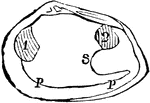
Oyster
Oysters grow for the most part in marine or brackish water. Inside a usually highly calcified shell…
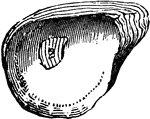
Oyster
Oysters grow for the most part in marine or brackish water. Inside a usually highly calcified shell…
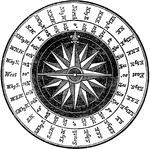
Compass Card
"Three principal parts, the card, the needle on its lower suface, and the case. The whole is enclosed…
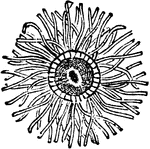
Actinia
"A genus of marine animals closely allied to the Hydraform Polypi, but of much greater size, and always…
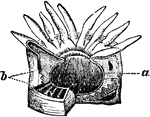
Actinia
"A genus of marine animals closely allied to the Hydraform Polypi, but of much greater size, and always…

Marine Algae of New England
Similar section of a sterile conceptacle, containing slender antheridia.
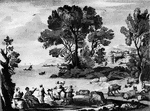
The Rape of Europa
This painting by Claude Gelle Le Lorrain is one of his favorites. It is practically identical to his…
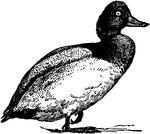
Scaup Duck
"The scaup (Fuliguia mariula) is a winter visitor to the United States and Southern Europe.…








